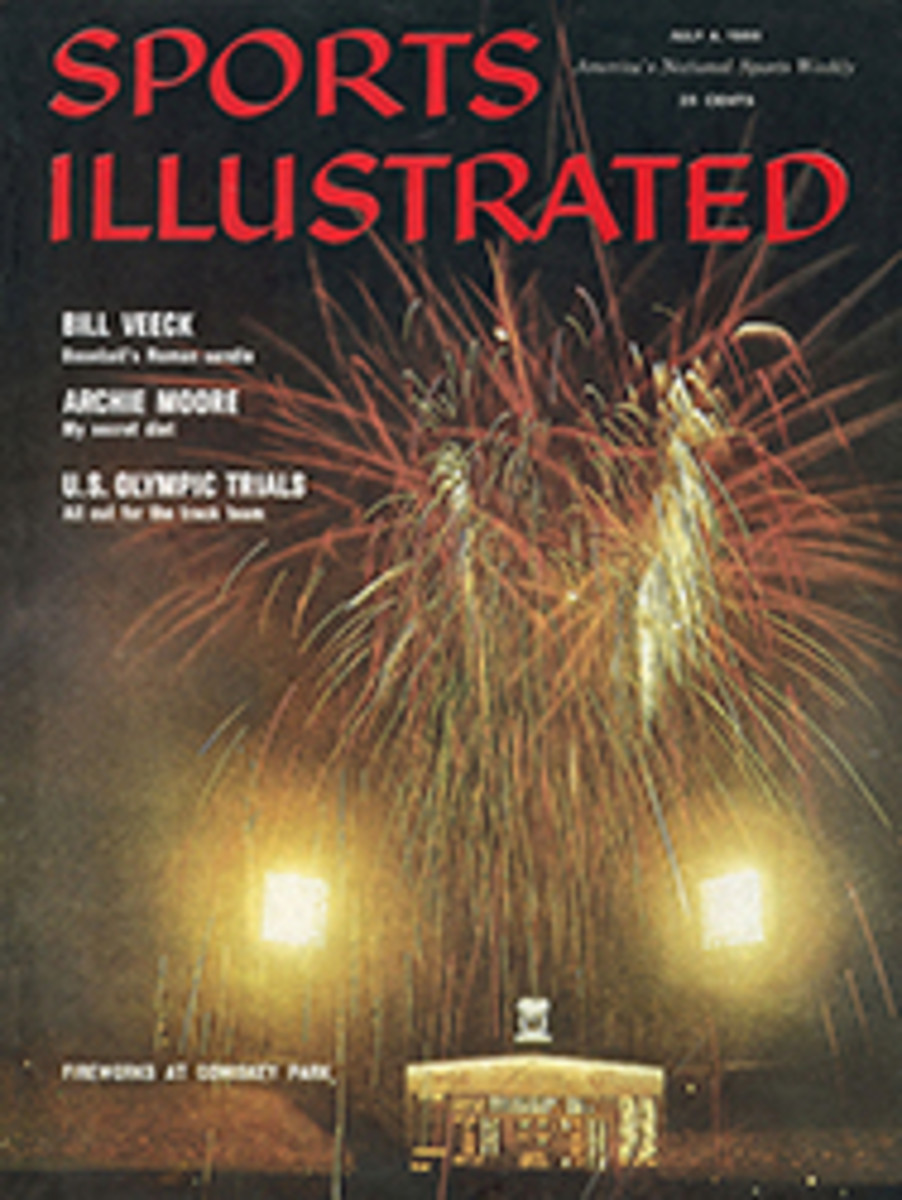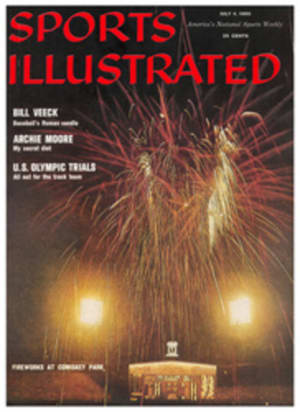
Ears of Gold
There are sportsmen who mark the passage of the months through spring and summer by private calendars: racing fans who follow the Thoroughbreds from south to north on both coasts and up the Mississippi from New Orleans to Chicago; sailors whose calendars advance by regatta dates; baseball buffs whose cycles all lead to Opening Day. Let another special calendar be celebrated here: the progress of fresh, local eating corn up through the American latitudes.
Florida boasts a winter crop. By mid-April it's "coming in local" in Texas and California, by late May in Georgia, by June in Alabama, the Carolinas and Oklahoma, by early July in Kansas, New Jersey and Illinois, by mid-July almost everywhere else that sweet corn grows. Served on the cob, it probably comes closer to being America's national dish than any other food. Apple pie, after all, has been known to generations of Gallic chefs as tarte aux pommes. Corn on the cob is strictly American and as old as the Indians.
The word corn itself conjures up countless essences of a Minnesota boyhood. The first great fields I knew were on a farm where my father rented a summer cottage, and where an Indian and his brood camped in a shack on the river's edge. My brothers and I were drawn by the catfish in that slow stream and by a Chippewa playmate named Charlie. Young Charlie knew where the best corn grew and where the catfish drowsed. We roasted both over a fire beside the water. Corn, Charlie believed, was the Indians' by hard-earned divine right. He told the ancestral Chippewa story of a boy like himself who'd been the first to bring his people the golden grain:
An Indian youth, Charlie told us, lay on the ground weak from fasting in tribute to his approaching manhood. He sensed the presence of a visitor, and when he struggled to a sitting position he saw a spirit, clothed in green fronds. "Get up and wrestle," said the spirit, "and if you overcome me you may strip off my green finery and bury it." For three days the green spirit and the young Indian wrestled, and on the fourth the famished earthling pinned his adversary and buried the fronds as he had been instructed. Sure enough, when harvest time came the greenery had become a living plant.
At our house for weeks at a time we had corn on the cob at least once a day. Sometimes my mother sliced the kernels off the fresh cobs and combined them with an egg batter to make fritters which we consumed at breakfast. Her version of "squaw corn," an old Indian concoction, was also a hot weather treat. So was her corn soufflé, the recipe for which is given below.
CORN ON THE COB
Corn begins to lose some of its natural sweetness the moment it is picked, so buy it as fresh as possible. Too much cooking toughens corn; so does putting salt in the water in which it is boiled. When corn is not absolutely fresh, a little sugar may be added to the water, or it may be cooked in one-third milk and two-thirds water to enhance its sweetness and keep it tender. Boil four to eight minutes, drain and serve immediately with butter, salt and freshly ground black pepper.
Corn can be steamed by placing a bed of husks in the bottom of a large pot and arranging the ears upon it. Add an inch or two of boiling water, cover the pot and steam five minutes for young, tender corn.
To roast corn, pull back the husks and remove the silk. Dip the ears in water, then replace the husks and roast on a grill over hot coals or on the broiler rack of the oven.
If foil wrapping is used, corn can be seasoned before it is roasted. Butter the ears, sprinkle them with salt and paprika, and seal the foil at all points.
CORN SOUFFLE (for six)
4 ears corn
4 tablespoons butter
4 tablespoons flour
1 cup milk, scalded
4 eggs
1 teaspoon minced red pepper
1 teaspoon grated onion
‚Öì cup grated mild cheese salt
cayenne pepper
Use a sharp knife to slit each row of kernels down the middle. Then, with the edge of a spoon, scrape all the pulp from the cob, leaving the skin of the kernels to be discarded. Melt butter, stir in flour, and when mixture is smooth add scalded milk gradually, cooking slowly until it is thick and creamy. Remove from fire and stir in 4 beaten egg yolks. Add corn, red pepper, onion, cheese and seasonings. Beat egg whites until stiff. When yolk mixture is cool, fold in egg whites and pour into a buttered 2-quart soufflé dish. Have the oven preheated to 350° and bake for about 40 minutes or until soufflé is well puffed and lightly browned.
PHOTO
LOUISE DAHL-WOLFE

